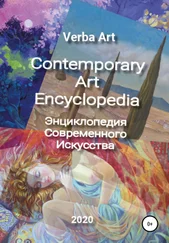[7th] … All our transactions were carried on in as friendly a manner as possible if we except thieving. Our people were daily walking in the isle without arms, either quite alone, or in little companies. They were invited to enter the houses, where the people gave them to eat; nor did the civility of their landlords stop at a slight collation, they offered them young girls; the hut was immediately filled with a curious croud of men and women, who made a circle round the guest, and the young victim of hospitality. The ground was spread with leaves and flowers, and their musicians sung an hymeneal song to the tune of their flutes. Here Venus is the goddess of hospitality, her worship does not admit of any mysteries, and every tribute paid to her is a feast for the whole nation. […]
I have often, in company with only one or two of our people, been out walking in the interior parts of the isle. I thought I was transported into the garden of Eden; we crossed the turf, covered with fine fruit‐trees; and intersected by little rivulets, which kept up a pleasant coolness in the air, without any of those inconveniences which humidity occasions. A numerous people there enjoy the blessings which nature showers liberally down upon them. We found companies of men and women sitting under the shade of their fruit‐trees: they all greeted us with signs of friendship: those who met us upon the road stood aside to let us pass by; every where we found hospitality, ease, innocent joy, and every appearance of happiness amongst them.
* * *
The isle which at first was called New Cythera, is known by the name of Taiti amongst its inhabitants. […]
The height of the mountains in the interior parts of Taiti is surprising in respect to the extent of the island. Far from making its aspect gloomy and wild, they serve only to embellish it, offering to the eye many prospects and beautiful landscapes, covered with the richest productions of nature, in that beautiful disorder which it was never in the power of art to imitate. From thence spring a vast number of little rivulets, which greatly contribute to the fertility of the country, and serve no less to supply the wants of the inhabitants than to adorn and heighten the charms of the plains. All the flat country, from the sea‐shore to the foot of the mountains, is destined for the fruit‐trees, under which, as I have already observed before, the houses of the people of Taiti are built, without order, and without forming any villages. One would think himself in the Elysian fields. […]
The inhabitants of Taiti are often seen quite naked, having no other clothes rather than a sash, which covers their natural parts. However, the chief people among them generally wrap themselves in a great piece of cloth, which hangs down to their knees. This is likewise the only dress of the women; and they know how to place it so artfully as to make this simple dress susceptible of coquetry. As the women of Taiti never go out into the sun without being covered, and always have a little hat, made of canes, and adorned with flowers, to defend their faces against its rays, their complexions are, of course, much fairer than those of the men. Their features are very delicate; but what distinguishes them, is the beauty of their bodies, of which the contour has not been disfigured by a torture of fifteen years duration.
Whilst the women in Europe paint their cheeks red, those of Taiti dye their loins and buttocks of a deep blue. This is an ornament, and at the same time a mark of distinction. The men are subject to the same fashion. I cannot say how they do to impress these indelible marks, unless it is by puncturing the skin, and pouring the juice of certain herbs upon it, as I have seen it practised by the natives of Canada. It is remarkable, that this custom of painting has always been found to be received among nations who bordered upon a state of nature. […] The very air which the people breathe, their songs, their dances, almost constantly attended with indecent postures, all conspire to call to mind the sweets of love, all engage to give themselves up to them. They dance to the sound of a kind of drum, and when they sing, they accompany their voices with a very soft kind of flute, with three or four holes, which, as I have observed above, they blow with their nose. They likewise practise a kind of wrestling; which, at the same time, is both exercise and play to them.
Thus accustomed to live continually immersed in pleasure, the people of Taiti have acquired a witty and humorous temper, which is the offspring of ease and of joy.
IIB4 A selection of texts from the Cook voyages to the Pacific 1768–80
Captain James Cook (1728–79) commanded three voyages of exploration to the Pacific between 1768 and 1780. The first, on the Endeavour , from 1768 to 1771; the second, with two ships, the Resolution and Adventure , from 1772 to 1775; the third, again with two ships, the Resolution and Discovery , from 1776 to 1780. On the third voyage, Cook was killed in Hawaii on 14 February 1779. Up to that point, the Cook voyages were the most highly organized and extensive attempts to explore the world ever undertaken. There is an enormous literature on them, both by the participants themselves and by historians and anthropologists ever since, not to mention works by a variety of artists ranging from eighteenth‐century European academicians to contemporary indigenous Australian and Oceanian artists. The present brief selections are intended to capture some key aspects of the eighteenth‐century Europeans’ responses to the people they encountered, and to their material culture. The former responses bear upon philosophical ideas such as ‘the state of nature’, the ‘noble savage’ and the ‘stages’ of human social development. In the second case, it should be understood that the eighteenth‐century writers had no concept of ‘material culture’ as such, and that in their worldview, the concept of ‘Art’ simply did not apply to the societies in which they found themselves. The central concept which the Enlightenment explorers possessed was that of ‘curiosity’. This pointed to two different things. On the one hand, a mental disposition to enquiry, such that one might be said to be ‘curious’ about something. On the other, to physical objects of an unfamiliar kind, be they natural or the products of human action. These were ‘curiosities’. In the case of such things as bodily ornamentation and clothing, utensils and weapons, even architecture, these were frequently compared (often positively) to European craft or artisanal products. But in the case of other objects involving representations of the human figure, the response was more often critical, implicitly conditioned by the European canon of mimesis. The Cook voyages were double‐sided affairs. Sponsored by both the Royal Society and the Royal Navy, they sought equally to expand knowledge and also British power and trade. All included several scientists and artists. Among the former are numbered Joseph Banks and the father and son team Johann Reinhold and George Forster; among the latter, on the first voyage Sydney Parkinson, on the second, William Hodges, and on the third John Webber. Cumulatively, the Cook voyages amassed a great deal of information, in both verbal and visual formats, about Oceanic societies that were wholly unfamiliar to European art, science and philosophy. What the voyages meant to the people of Oceania at that time is less clear cut. In the medium to long term, colonization, it goes without saying, was a disaster for them. Only since the end of European imperialism in the Pacific has a reassertion of Oceanic cultures emerged and gathered strength. At the time of the first voyages, however, relations between Polynesians and Europeans were more equal than subsequent imperial histories tended to allow. In the late eighteenth century, Europeans in the Pacific were a long way from home and entirely dependent on the goodwill and support of those they encountered. In fact Cook’s failure to grasp that he was being accommodated within a pre‐existing sociocultural structure with its own requirements and protocols arguably led to the incident in Hawaii that resulted in his death. The most remarkable instance of this mutual dependence concerns the Tahitian (or to be more specific, Ra’itean) Tupaia. Often referred to as a ‘navigator‐priest’, Tupaia was, in Nicholas Thomas’s words, ‘a priest, a political strategist … an indigenous intellectual with experimental inclinations’ (Thomas, Discoveries , 2004, p. 21). On the first voyage, Tupaia assisted Cook in his journeys around the Polynesian islands, acting as guide and translator. He subsequently helped navigate the ship as far as New Zealand, where despite the distance involved, he was once again able to act as a linguistic and cultural intermediary. Tupaia left no written record of his interaction with the Europeans, but in the course of the journeys, he made half a dozen remarkable drawings of subjects ranging from a Tahitian funeral costume to a gift exchange between Banks and a Polynesian chief, and even some indigenous Australian men in a canoe. It was not until 1997 that these drawings were attributed to Tupaia, having been previously ascribed to an anonymous and untutored European seaman. (For a brief discussion, see Wood 2014, pp. 94–6.) Tupaia’s intention was to travel back with Cook to Europe and learn more about the powerful civilization that had suddenly appeared, uninvited, to his people. What might have come of that second encounter remains in the realm of speculation since Tupaia succumbed to disease, contracted during Cook’s stopover at the Dutch port of Batavia in present‐day Indonesia, on the return journey. In all likelihood, given the European track record in America, little is likely to have changed in the history of European exploitation of the Pacific. We have arranged the present selections, which were all written by Europeans involved in the voyages, thematically, rather than chronologically, since the interest of the present anthology lies in what was said about tattooing or architecture or dance rather than when, precisely, it was said. Dates are, however, provided with each selection. Eighteenth‐century spelling has, for the most part, been retained, e.g. ‘Otahite’ for ‘Tahiti’. We have listed our sources after the introduction to each text.
Читать дальше












